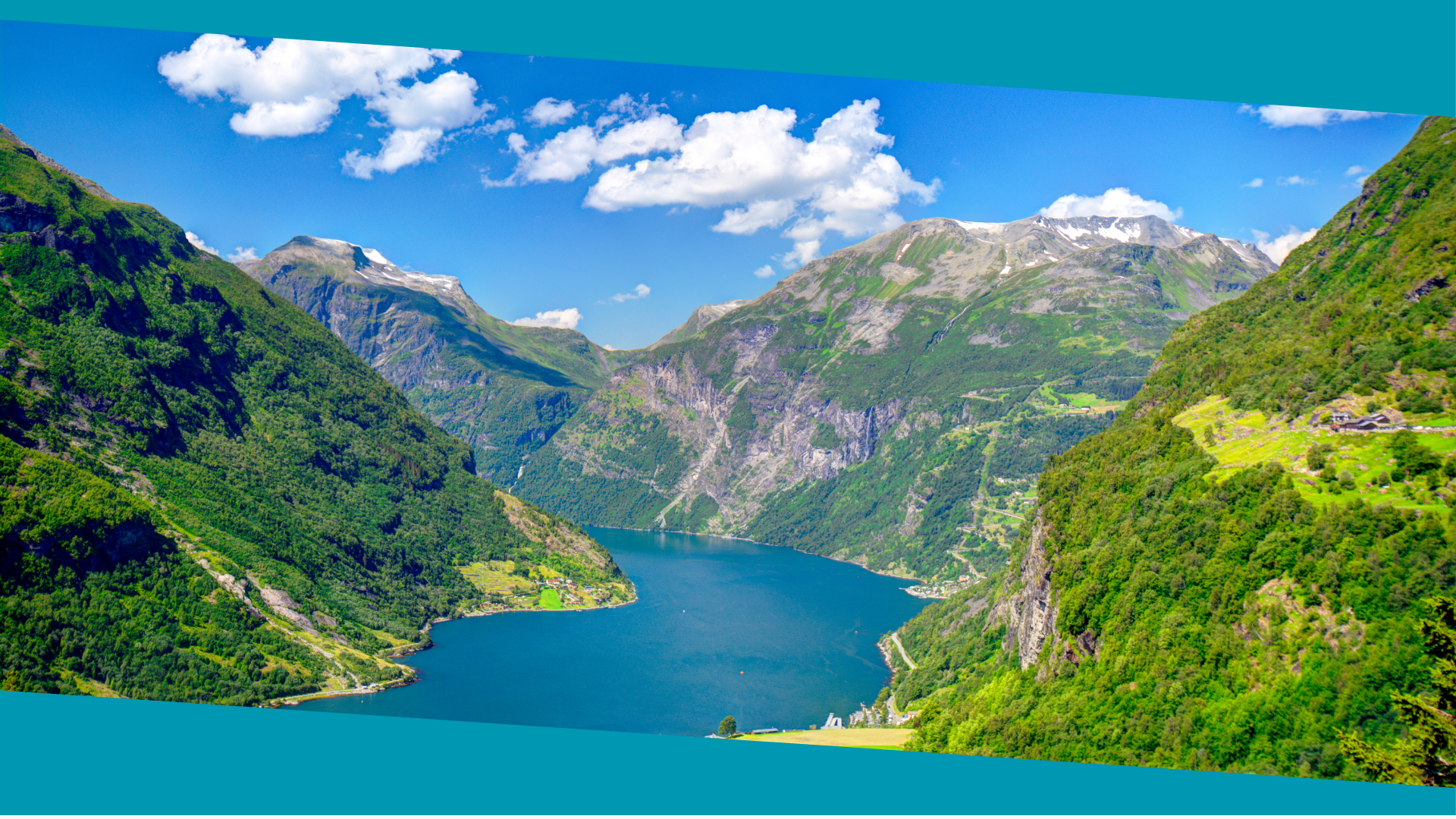Have you ever wondered about the gods revered by the fearsome Vikings? Who were these divine beings who captivated the imaginations of an entire culture? Join us on a journey into the enchanting realm of Norse mythology as we explore the powerful figures known as the Norse gods. Prepare to be mesmerized by their legends, intrigued by their influence, and awestruck by their significance in Viking culture.
Table of Contents
ToggleKey Takeaways:
- Discover the fascinating world of Norse gods and their role in Norse mythology.
- Uncover the legends and iconic tales surrounding these powerful deities.
- Understand the impact of Norse gods on Viking culture and society.
- Explore the majestic realm of Asgard and its inhabitants.
- Delve into the rich storytelling tradition of Norse sagas that showcase the exploits of gods and heroes.
The All-Father: Odin
Odin, the powerful and wise chief god of Norse mythology, holds a prominent position in the pantheon of Viking gods. Revered as the All-Father, Odin is known for his deep wisdom and his connection to various aspects of Viking culture.
“Odin, the mightiest of the gods and the wisest of all beings, rules over Asgard with unparalleled knowledge and foresight.” – Prose Edda
As the ruler of Asgard, the realm of the gods, Odin wields immense power, but it is his wisdom and thirst for knowledge that truly sets him apart. He is a seeker of truths and often ventures on daring quests in pursuit of divine enlightenment.
One of the most iconic symbols associated with Odin is his missing eye. In exchange for a sip from the Well of Wisdom, Odin sacrificed one of his eyes, enhancing his understanding of the past, present, and future. This sacrifice epitomizes the depths of his wisdom and his willingness to make personal sacrifices for the greater good.
Huginn and Muninn, Odin’s loyal ravens, are a testament to his wisdom and knowledge gathering. These wise creatures serve as Odin’s eyes and ears, flying throughout the Nine Realms and relaying important information to him.
Odin’s influence extends beyond the realm of gods. He is also the god of war, revered by warriors for his role in guiding them to victory on the battlefield. His valiant warriors, known as the Einherjar, occupy the great hall Valhalla, awaiting Ragnarok, the apocalyptic battle that will reshape the world.
Odin and Norse Cosmology
In Norse cosmology, Odin plays a vital role in maintaining the delicate balance between the realms. He stands at the epicenter of the intricate web that connects Asgard (the realm of the gods), Midgard (the realm of humans), and Niflheim (the land of the dead).
Odin’s ceaseless pursuit of knowledge and wisdom is encapsulated in the runes, the ancient alphabet of the gods. It is believed that Odin discovered the runes while hanging from Yggdrasil, the great world tree, for nine days and nights, sacrificing himself to gain divine insight.
| Symbol | Meaning |
|---|---|
| Eihwaz | Endurance, transformation |
| Raidho | Journey, travel, communication |
| Mannaz | Humanity, self-awareness |
| Ansuz | Divine inspiration, communication |
| Othala | Heritage, ancestry, inheritance |
These runic symbols provide guidance, protection, and wisdom to those who seek their power. Odin’s connection to the runes further cements his role as the epitome of wisdom and knowledge in Norse mythology.
Odin’s complex persona, encompassing wisdom, sacrifice, and leadership, has fascinated scholars and readers for centuries. The tales surrounding the All-Father continue to captivate and inspire, revealing profound insights into the rich tapestry of Norse mythology and its enduring impact on Viking culture.
The Mighty Thunderer: Thor
Thor, the god of thunder, holds a prominent place in Norse mythology and is revered as one of the most iconic figures among the Viking gods. Known for his incredible strength and his unwavering dedication to protecting mortals, Thor has captured the imaginations of countless individuals throughout history.
Thor’s adventures are legendary, with tales of his heroic battles against formidable adversaries and his quest to maintain peace in the Nine Realms. His exploits often took him to Asgard, the realm of the gods, where he stood alongside other divine beings in defense of their land.
No discussion of Thor would be complete without mentioning his mighty weapon, Mjolnir. Crafted by the skilled dwarves, this enchanted hammer grants Thor the ability to control thunder and lightning, making him an unstoppable force against his foes. With Mjolnir in hand, Thor’s power is unmatched, and he uses it to defend both gods and mortals alike.
Thor’s role as a protector extends beyond the realm of gods. He is seen as a guardian of humanity, standing up against any threat that may endanger mankind. Through his bravery and valor, he embodies the virtues that were highly regarded in Viking culture.
“Thor’s thunderous roar echoes through the heavens, striking fear into the hearts of his enemies. His unwavering resolve and his dedication to the well-being of both gods and mortals make him a true hero of Norse mythology.”
The Adventures of Thor
Thor’s escapades are filled with excitement and valor. Here are a few notable adventures of the thunderous god:
- The Quest for the Giants’ Land: Thor embarks on a perilous journey to the realm of the giants, Jotunheim, to retrieve a magical cauldron that can replenish the gods’ strength.
- The Defeat of the Midgard Serpent: Thor engages in a fierce battle with Jormungandr, the enormous serpent that encircles the world, in an epic struggle that shakes the earth itself.
- The Theft of Mjolnir: Loki, the mischievous god, steals Thor’s hammer, Mjolnir, leading to a thrilling escapade as Thor and his fellow gods attempt to reclaim this essential weapon.
These adventures, and many more, exemplify Thor’s heroic nature and his willingness to confront any challenge that comes his way.
Asgard and Thor’s Status
Thor’s connection to Asgard, the realm of the gods, is a significant aspect of his character. As one of the Aesir gods, Thor plays a vital role in maintaining the balance and order of the cosmos. He is a defender of Asgard against any threats that may arise from within or outside the realm.
Within the realm of Asgard, Thor’s presence is felt and respected by both gods and mortals. As the god of thunder, he holds a special place of honor and influence in Norse mythology.
| Thor’s Attributes | Significance |
|---|---|
| God of Thunder | Thor’s control over thunder and lightning reflects his power and ability to protect the gods and humanity. |
| Mjolnir | Thor’s iconic hammer, Mjolnir, is a symbol of his strength and serves as a weapon against his enemies. |
| Protector of Mortals | Thor’s role as a guardian of humanity displays his compassion and dedication to preserving the well-being of mortals. |
Thor’s status as a beloved and revered god in Asgard is a testament to his unwavering heroism and his essential role within the Norse pantheon.
The Realm of the Gods: Asgard
Welcome to Asgard, the magnificent realm of the gods in Norse mythology. This celestial city, situated high above the mortal realm, is a place of immense power and divine beauty. As the home of the mighty Viking gods, Asgard holds great significance in Norse cosmology.
Within the majestic walls of Asgard, the gods reign supreme. Odin, the All-Father, rules from his throne in the elaborate Great Hall of Valhalla. Here, the brave warriors chosen by the valkyries are welcomed into the afterlife, prepared for the final battle of Ragnarok.
As we traverse the enchanting streets of Asgard, we encounter a vibrant array of gods, each with their unique domain and abilities. From Thor, the god of thunder known for his formidable strength, to Freya, the goddess of love and beauty, Asgard is a tapestry of divine powers and personalities.
Asgard is not just a physical city; it represents a cosmic force in Norse mythology. It is the bridge between the mortal realm, Midgard, and the realms of the gods, serving as a vital connection between the two worlds.
The gods of Asgard, known as the “Asgardian pantheon,” embody the very essence of Viking culture. They are symbols of bravery, wisdom, and kinship, inspiring the Norse people in their daily lives and adventures. The tales of their exploits and struggles shape the moral fabric of Viking society.
To truly appreciate the grandeur of Asgard, let us take a moment to explore a fascinating table that highlights the key gods and their domains:
| God | Domain |
|---|---|
| Odin | Wisdom, war, death |
| Thor | Thunder, strength, protection |
| Loki | Mischief, trickery |
| Freya | Love, beauty, fertility |
| Baldur | Light, beauty, purity |
As we bid farewell to Asgard, we carry with us a deeper understanding of its significance within the Norse pantheon. This mythical realm, inhabited by powerful gods, weaves a rich tapestry of legends and represents the core values of Viking culture.
Tales of Heroism: Norse Sagas
Step into the world of Norse mythology, where ancient sagas enthrall readers with tales of heroism, gods, and mythical creatures. These sagas, passed down through generations, illuminate the rich storytelling tradition of the Norse and continue to captivate audiences today.
The Norse sagas transport us to a time when gods and mortals interacted, and heroic deeds were celebrated. These epic narratives bring to life the exploits of powerful gods like Odin and Thor, as well as legendary heroes who faced unimaginable challenges.
One of the most renowned sagas is the Saga of the Volsungs, which tells the story of a heroic family destined for glory and tragedy. It chronicles the adventures of Sigurd the Dragon Slayer, the valiant hero who defies fate and faces mythical creatures in his quest for love and revenge.
Another remarkable saga is the Saga of the Icelanders, which depicts the lives of early Norse settlers in Iceland. These sagas offer a glimpse into the daily struggles, triumphs, and complex relationships of Viking society.
The Power of Symbolism
Within the sagas, powerful symbolism is often woven into the narrative, reflecting the beliefs and values of the Viking culture. Gods like Odin embody wisdom, Odin’s ravens symbolize knowledge, and Thor’s mighty hammer, Mjolnir, represents strength and protection.
The sagas also introduce us to a wide array of mythical creatures, from frost giants to dragons, each with their own significance and role within the Norse mythological framework. These creatures add an element of magic and mystery to the sagas, captivating readers with their otherworldly presence.
The Norse sagas are not mere tales of heroism; they offer profound insights into the human condition, exploring themes of honor, courage, destiny, and the struggle between good and evil. They serve as a window into the Viking worldview, where gods walked among mortals and the boundaries between myth and reality blurred.
So, embark on a journey through the sagas of Norse mythology and immerse yourself in the captivating stories that have stood the test of time. Discover the heroic exploits, encounter powerful deities, and unravel the intricate tapestry of Norse mythological lore.
The Influence of Norse Gods on Viking Culture
Throughout history, mythology has played a significant role in shaping the cultures and societies of various civilizations. One such mythology that had a profound impact on a civilization is Norse mythology, particularly the worship and belief in Norse gods by the Vikings.
The Norse gods, also known as viking gods, held immense importance in the lives of the Vikings. They were revered, feared, and worshiped for their divine powers, abilities, and influence over various aspects of life. The worship of these gods was central to the daily lives of the Vikings, and their beliefs and rituals played a crucial role in shaping their culture.
The Norse gods were seen as powerful beings who controlled natural forces, such as thunder, fertility, and war. They were believed to have direct influence over the outcome of battles, the harvest, and even the weather. The Viking gods were seen as protectors, patrons, and guides in different aspects of life.
“Our ancestors believed that the gods watched over us, guiding our actions and providing us with strength and protection. We paid homage to them through rituals, sacrifices, and offerings, seeking their favor and blessings.”
The worship of Norse gods manifested in various rituals and practices. Temples, known as “hofs,” were dedicated to specific gods and were places of worship and communal gatherings. These hofs served as a focal point for religious ceremonies, feasts, and celebrations in honor of the gods.
In addition to worship, the beliefs surrounding Norse gods also influenced Viking art and architecture. Intricate carvings and jewelry often depicted scenes from Norse mythology, showcasing the gods and their heroic deeds. The emphasis on craftsmanship and storytelling in Viking art was closely tied to their belief in the gods and their tales.
Furthermore, the Norse gods played a role in the societal structure of the Vikings. Odin, the chief Norse god, was seen as the ruler of Asgard and the patron of wisdom, warfare, and magic. His influence extended to the leadership and decision-making of Viking chieftains and warriors. Thor, the god of thunder, was revered as a protector of mortals and was often called upon for strength and courage in times of war.
H3: Notable Norse Gods (if appropriate)
- Odin: The All-Father and ruler of Asgard.
- Thor: The god of thunder and protector of mortals.
- Loki: The trickster god known for causing mischief and chaos.
- Freyja: The goddess of love, beauty, and fertility.
- Týr: The god of war and justice.
The influence of the Norse gods on Viking culture cannot be overstated. Their worship and beliefs shaped the worldview of the Vikings and imparted a sense of identity, purpose, and connectedness to the natural and supernatural realms. The impact of Norse mythology can still be felt today in various forms, from literature and pop culture to the revival of Viking-inspired traditions.
| Norse God | Domain | Symbols |
|---|---|---|
| Odin | Wisdom, warfare, magic | Raven, spear, Odin’s Eye |
| Thor | Thunder, strength, protection | Mjolnir (hammer), goat-drawn chariot |
| Loki | Trickery, chaos, change | Flame, serpent, shape-shifting |
| Freyja | Love, beauty, fertility | Necklace, chariot pulled by cats |
| Týr | War, justice, law | Sword, scales of justice |
Exploring Other Norse Gods
While Odin and Thor may be the most well-known gods in Norse mythology, there are numerous other deities that hold significant roles in the ancient tales. Let’s expand our knowledge and uncover the attributes, place in the pantheon, and significance of these noteworthy Norse gods.
Týr: The God of Law and Justice
Týr is a powerful god associated with law, justice, and heroic glory. He is known for sacrificing his hand to bind the monstrous wolf Fenrir, demonstrating his unwavering commitment to maintaining order. Týr holds a place of honor within the pantheon of gods and plays a crucial role in the moral and lawful aspects of Viking society.
Freyja: The Goddess of Love and Beauty
Freyja is a prominent goddess associated with love, beauty, and fertility. She is depicted as a strong and independent figure, revered by both gods and mortals alike. Freyja commands the magical realm of Fólkvangr and is often depicted riding a chariot pulled by two large cats. Her influence extends to matters of desire, love, and the pursuit of passion.
Loki: The Trickster God
Loki, known for his unpredictable nature and shape-shifting abilities, is a complex and influential figure in Norse mythology. Considered both a friend and foe to the gods, Loki is associated with chaos, mischief, and cunning wit. While his actions often lead to turmoil, Loki’s presence brings a necessary balance to the pantheon, challenging the status quo and providing opportunities for growth and change.
Baldr: The Shining God
Baldr is the god of light, purity, and beauty. He is beloved among the gods and known for his compassionate and peaceful nature. Baldr’s death and subsequent resurrection are pivotal events in Norse mythology, symbolizing the cycle of life and the eternal struggle between light and darkness.
Comparing Noteworthy Norse Gods
| God | Attributes | Significance |
|---|---|---|
| Týr | Law, justice, heroic glory | Ensures order and upholds moral standards in Viking society |
| Freyja | Love, beauty, fertility | Influential in matters of desire, love, and passion |
| Loki | Trickery, chaos, wit | Brings necessary disruption and challenges to the pantheon |
| Baldr | Light, purity, beauty | Represents the eternal cycle of life and the struggle between light and darkness |
These are just a few examples of the vast array of gods within Norse mythology. Each deity plays a specific role in the intricate tapestry of Norse cosmology, contributing to the overall balance and complexity of the ancient belief system. As we continue to explore the realm of Viking gods, we uncover a rich and diverse pantheon that reflects the multifaceted nature of the Norse culture.
Conclusion
As our journey into the world of Norse mythology comes to an end, we have uncovered the captivating tales and mysteries surrounding the Norse gods. From the wisdom of Odin to the might of Thor, these deities have left an indelible mark on Viking culture and continue to fascinate people today.
The gods of Asgard, with their divine powers and human-like traits, have held a special place in Norse mythology. Their stories of heroism, adventure, and divine intervention have not only entertained but also provided moral guidance to the Vikings.
While the era of the Vikings has long passed, the influence of these gods can still be felt in modern popular culture. From blockbuster movies featuring Thor to the use of Norse mythology symbolism in literature, art, and even fashion, the allure of the Norse gods remains strong.
The rich tapestry of Norse mythology, with its pantheon of gods and their interconnected stories, continues to inspire and captivate audiences of all ages. Whether you’re drawn to the wisdom of Odin, the thunderous power of Thor, or the legends of Asgard, the Norse gods offer a glimpse into a mythological world that continues to enchant and intrigue.








